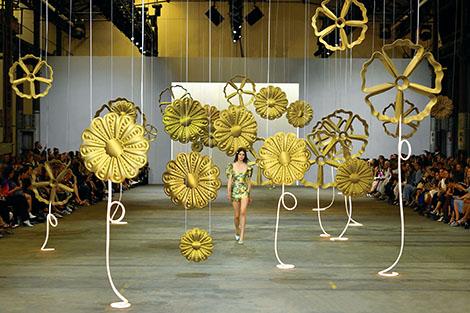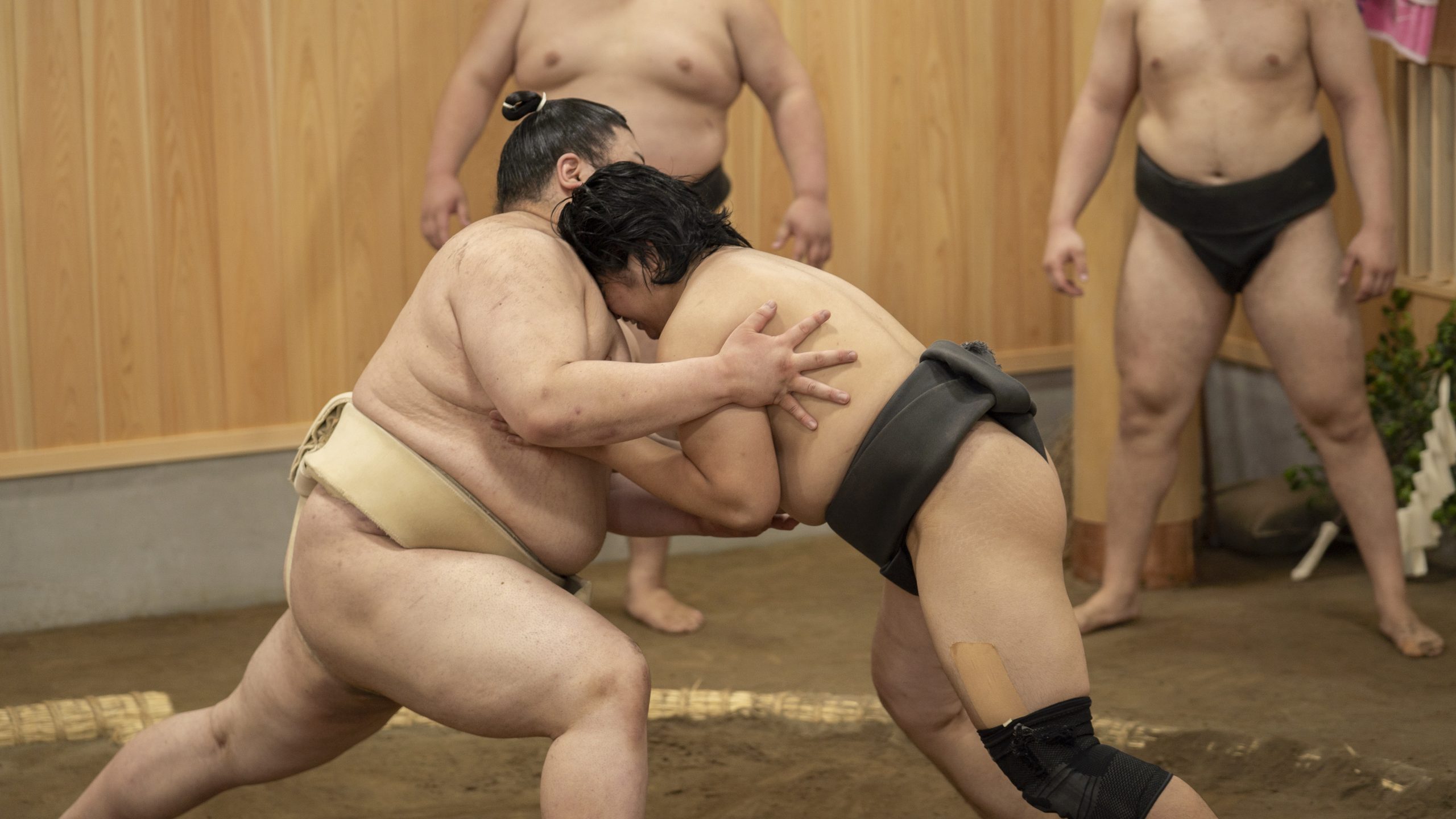Village people
Bulau Bulau Aboriginal Village, Yilan County, Taiwan
WHY IS IT SPECIAL?
The Atayal are the second-largest indigenous group in Taiwan and use facial tattoos, badasun, as a rite of initiation. The badasun serves as a coming-of-age symbol. In the past, men had to present the head of an enemy as a proof of their ability to protect their home. The women had to prove that they were able to weave cloth and perform housekeeping duties before getting the badasun.
WHAT CAN YOU DO THERE?
Perched on a 400m-high plateau is the Bulau Bulau Aboriginal Village. “Bulau bulau” means “strolling” in the Atayal language. The village encourages guests to stroll through the village, exploring the beauty of the Atayal culture. Surrounded by lush greenery, the village was built to help revive the traditional way of life. You can view the organic farming of millet, corn, sweet potatoes and poultry.
This self-sufficient community even brews its own millet wine. Your group can organise teambuilding sessions and join in the harvest festival during the millet-harvesting season, complete with lessons in traditional dance, singing and millet-wine brewing.
HOW TO GET THERE
The drive from Taipei takes approximately 75 minutes.
CONTACT
email: stacy.yang@gisgroup.com
www.gisgroup.com/pco/taiwanlook.html

Borneo adventure
Iban longhouses
Sarawak, Malaysia
WHY IS IT SPECIAL?
The Iban tribe was a force to be reckoned with in ancient Borneo. The history of the Ibans is largely a mystery, but the Ibans were famous for headhunting. They believed that the soul of a person resides in their head. Through headhunting, the Iban hunter captured another person’s soul and with it their status, strength, skill and power.
Today, headhunting is no longer practised but guests are still able to find trophy skulls hanging around the longhouses. A longhouse is a dormitory-style accommodation where 25 to 30 families live under the same roof.
WHAT CAN YOU DO THERE?
The longhouse experience is perfect for either a pre- or post-conference tour or a teambuilding exercise. A lengthier stay gives you the opportunity to learn about rice planting, or the traditional way of catching fish in bamboo traps. Less physically demanding activities include creating local arts and crafts.
As the night goes on, you are welcome to let your hair down and put on your dancing shoes. Dance performances and games incorporate elements of skill and strength, revealing traces of the Ibans’ warrior heritage. You can also participate in the “traditional” longhouse disco. Ancient gongs and skin drums accompany the joget and dangdut dance styles.
Alternatively, Amelia Roziman, marketing and communications manager of the Sarawak Convention Bureau, suggests participating in a corporate social responsibility programme. “Join a longhouse or a remote kampong and assist the local people in constructing much-needed facilities such as medical clinics, school buildings, bridges and agricultural projects. You will become part of the traditional longhouse community and share in their simple everyday life,” she says.
HOW TO GET THERE?
The majority of the Ibans are located at Batang Ai, Sri Aman. The longhouses there are a four-hour drive from Kuching, followed by a 45-minute longboat ride. On the other hand, the Sarawak Cultural Village is 40 minutes’ drive from Kuching.
CONTACT
email: info@sarawakcb.com
Out of Africa
Maasai Mara Game Reserve, Kenya
WHY IS IT SPECIAL?
One of Africa’s most famous tribes, the Maasai’s traditional semi-nomadic lifestyle is under threat. Yet, the Maasai people remain resilient in continuing their customs and traditions. The Maasai Mara Game Reserve is one of the world’s most stunning natural habitats, teeming with exotic wildlife. Your group will stay at the five-star Maasai Mara Sopa Lodge, visit Maasai villages and join an unforgettable safari adventure.
Afshan Poona, marketing manager of HTT Holidays & Incentives, says: “The tribe stands out for its vibrant nature as displayed in their dramatic red attire, the traditional ochre paint worn by Maasai warriors, their long braided hair and spears.”
“The women of this tribe are equally regal as they stand proud laden with intricately beaded jewellery and colourful fabrics. They are a truly special tribe having maintained their nomadic lifestyle and age-old traditions, living in mud huts and still herding cows (their most valuable asset).”
WHAT CAN YOU DO THERE?
Teambuilding activities can be arranged to learn from the Maasai’s way of life. Delegates can be separated into groups and participate in a bead necklace-making competition. You and your competitors can also learn how to make fire the Maasai way or get teams to race in building a hut in the traditional style.
HTT Holidays & Incentives’ five-day itinerary allows you to not only experience the Maasai’s way of life, but also to experience a Kenyan safari. You can enjoy the evening game drive to observe giraffes, buffaloes and oryx in their natural habitat.
HOW TO GET THERE
You can reach the Maasai Mara Game Reserve by air or by road. The most convenient option is from the capital city of Nairobi where a flight to the Mara takes 45 minutes.
CONTACT
email: info@travelhtt.com
Under one flag
Lesedi African Lodge and Cultural Village
Johannesburg, South Africa
WHY IS IT SPECIAL?
South Africa is often hailed as the Rainbow Nation for its multicultural unity. The Lesedi African Lodge and Cultural Village represents five traditional homesteads of the major ethnic groups: the Zulus, the Xhosa, the Pedi, the Basotho and the Ndebele. Each tribe’s distinctive identity offers a different experience for visitors. Company sales and marketing manager, Jacinda Kab, says: “You only need to visit the Village to know all about South Africa’s culture – an intertwined, harmonious blend of African roots and European traditions, a country where we speak in 11 official tongues, yet fly one flag.”
WHAT CAN YOU DO THERE?
A change of scenery is not quite enough at Lesedi. Immerse yourself in the African culture by studying the murals and décor in any of the five conference facilities.
The Zulu-themed Sensakhakona is perfect for small breakaway sessions and can hold up to 25 delegates. Then there is the Tswana Letsatsi Open-Air Lapa for a larger group event. Letsatsi means “the sun” and a lapa is the open-air enclosure in a Tswana village. This lapa can seat up to 120 people. It is surrounded by burning fire pots and usually has a huge bonfire in the middle. The floor of soft white river sand creates a unique outdoor feeling. The menu is a true African braai, served along with a buffet of African dishes and, of course, there is a fully stocked bar.
HOW TO GET THERE?
Just north of Johannesburg, Lesedi requires an hour-long drive from Johannesburg’s OR Tambo International Airport.
CONTACT
email: sales@lesedi.com
Maori magic
Te Puia, Rotorua, New Zealand
WHY IS IT SPECIAL?
The Maori culture is home to several indigenous performing arts. One of them is the haka, a dance routine punctuated by fierce shouts and vigorous movements. The ferocity of the dance makes it intimidating, hence, it is commonly seen as a war dance. It is most noted as a pre-match performance by the All Blacks, New Zealand’s national rugby union team. However, the haka is also used to express other emotions, such as joy, in welcome ceremonies for visitors.
Another famous Maori dance is the poi. It employs balls that are swung around the performer’s body. The last few decades saw poi spinning evolve. Fire pois, or fire twirling as it is more commonly known, involves juggling lit balls or batons.
WHAT CAN YOU DO THERE?
Within Rotorua, lies Te Puia, the New Zealand’s Maori Arts and Crafts Institute. Be greeted by the Waharoa and Te Heketanga-a-Rangi (Heavenly Origins) as you enter the premises. The carved installations represent the spiritual beliefs of the Maori people.
Inside you can visit the traditional meeting place, known as the marae. It serves as a communal recreational ground and is used
for song and dance, prayers, weddings and even funerals.
As dusk settles, indulge in an authentic evening cultural experience called Te P? (the night). It is an intimate time for sharing knowledge and feasting. Fresh New Zealand green-shelled mussels are poached in hot geothermal pools and are accompanied by New Zealand beer or sparkling local wine.
HOW TO GET THERE
Te Puia is a 15-minute drive from Rotorua Airport and a two-hour drive from Auckland International Airport.
CONTACT
email: reservations@tepuia.com
Sapa Tribes
Lào Cai province, Vietnam
WHY IS IT SPECIAL?
Sapa is located in the Lào Cai province in northwest Vietnam, and plays host to many ethnic minority groups such as the H’mong, Dao and Tay peoples. Sapa is also home to Vietnam’s highest mountain, Fan Si Pan. Aside from the terraced fields used for farming, the mountainous terrain remains largely unaffected by urbanisation.
Despite the similarities in lifestyles, the tribes are distinct in heritage. The Yao people cover their heads with a black or red scarf. Some women substitute this scarf with a turban.
The H’mongs have subcultural divisions, with the H’mong Der (White H’mong) and Mong Leng (Green H’mong) being two of the largest groups. Other divisions include Hmoob Dub, H’mong Pua, H’mong Xau and H’mong Shi.
WHAT CAN YOU DO THERE?
Take the scenic nine-hour Victoria Express Train between Hanoi and Lào Cai, where you can enjoy fine Vietnamese cuisine in the dining car. There are two sleeping carriages able to accommodate 52 people. Accommodation options include Victoria Sapa Resort & Spa, where your team can enjoy massage treatments and four-star hospitality.
On clear days, you can get a great view of Fan Si Pan’s peak. Also in sight are the sloping terraces farmed by the different ethnic communities, growing staple foods like rice and corn. If your tour falls on a Wednesday, Saturday or Sunday, your group can make its way down to the markets where the different ethnic tribes convene. Observe the lives of the locals, where western influence has not yet rubbed off on them. You can taste local fare or purchase arts and crafts, all while appreciating the starkly different way of life.
This slower pace is ideal for post-conference tours or corporate retreats, where delegates can soak in the alternative lifestyle of the region.
HOW TO GET THERE
Although the Lào Cai province is accessible by road, it is advisable to travel by train from Hanoi. The trains with better facilities, including sleeping cabins and air conditioning, depart Hanoi station in the evening from 2100 to 2300 and arrive in Lào Cai the next morning.
To reach Sapa, you can hire cars or minibuses to take your group on the hour-long journey uphill.
CONTACT
email: go.vietnam@exotissimo.com
Minority report
Miao villages, Guizhou, China
WHY IS IT SPECIAL?
With a history that dates back even before the Han Chinese, there are varying accounts of how the Miao tribe begun. What is for certain is that despite widespread migration to Thailand, Laos, Vietnam and Burma, the Miao remain one of the largest minority groups in China. Guizhou province has a large concentration of the Miao people.
According to Pan Wei, director of corporate services and special projects of WildChina: ”The remote location, friendly local people and breathtaking natural beauty combine to make a trip there an unforgettable experience. A bonfire gala in a mountain village is definitely a welcome change for corporates tired of the hotel ballroom and banquet experience.”
WHAT CAN YOU DO THERE?
WildChina suggests taking part in community service projects to foster camaraderie. Teams can help rural villagers build libraries, repair roads and irrigation canals, or even build basketball courts.
For those less willing to get down and dirty, witness locals handcraft a native musical instrument in Paika Village. The village prides itself on the production of the lusheng, a polyphonic musical instrument constructed using multiple bamboo pipes. The lusheng has been used primarily in the rural regions of southwestern China.
WildChina’s seven-day itinerary also allows delegates to visit other villages around the region. Activities include observing paper-making in the Damochong Valley villages and enjoying a local opera performance at Jichang Old Han Village.
Another experience on its own is the teambuilding activity of orienteering through Guizhou’s hill tribes. Local trails criss-cross lush rice fields and thick bamboo grooves to connect ethnic villages tucked away in valleys. At each village, team members must seek out the next clue, which may involve completing a task (like planting rice) or seeking out a certain individual (like the village chief) who will help them navigate the many country trails.
HOW TO GET THERE
Guiyang Longdongbao International Airport services domestic flights. Driving time from the airport to the villages varies with location.
CONTACT
email: info@wildchina.com


